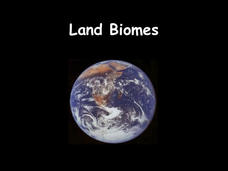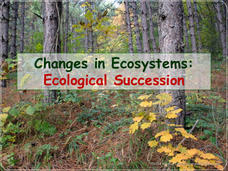Curated OER
Dragonfly Sculptures
Art projects are great when they apply to other subjects. First study insects, their parts, and their habitats. Then have little ones create a dragonfly. They use clothes pins, raffia, pipe-cleaners, and paint to construct their...
Curated OER
Over in the Meadow
Students discover how to locate books on meadow and pond animals and research them. Students discover how to locate fiction/story books about the animals mentioned in the counting book read. Students discover how to locate by author,...
Curated OER
Bugs Every Which Way
Students, after gathering information about insects through observation and the internet, explore and examine tiny insects that crawl through a magnifying glass and then draw their favorite bugs from different angles. They create a...
Curated OER
Pop-Up Wildlife Mural
Pupils research life in a rainforest including plants, animals, insects, climate. They discover reasons for the importance of rainforests to the Earth's environment. Students work as a group to create a large 3-D rainforest scene that...
Curated OER
Art: Go Ahead and Bug Me!
Students research arthropods, and identify the differences between vertebrates and invertebrates. After comparing and contrasting insects and arachnids, they create drawing of them that are anatomically correct. Students place their...
Curated OER
'Don't Let the Bugs Bite' Word Search
In this bugs word search worksheet, learners locate and identify 25 insect-related words within the word search puzzle.
Curated OER
Bee Pollen Popular
The world would be a much different place without the help of pollinators. Read about the important role bats, hummingbirds, and various insects play in plant reproduction, exploring the interdependence of living things in an ecosystem....
Curated OER
Unit 21 Terrariums
The history of terrariums and how to construct one are presented in this PowerPoint. Each important step aspect of terrarium care is discussed: selecting a container, drainage, soil, types of plants, and maintenance. You will want to...
Curated OER
Animal Habitat Dioramas
What a better way to have learners show what they know than with a diorama? Kids research an animal, its habitat, ecosystem, and environment in order to create a three-dimensional diorama. Have older children write a short paper on their...
Curated OER
Compound Species
Students gather pictures of animals, fish, birds, and insects, and sort them by category: land, sea, and air creatures. They choose two of these categories and imaginatively combine part of animals (such as horns, tentacles, fins, floppy...
Curated OER
Erase It! Endangered Animals
Students discover why many animals, insects, and birds are becoming extinct. They understand the importance of the food chain and how disturbing one area of it can cause havoc with wildlife. They discover how they can make a difference...
Curated OER
Flowers and Their Friends
Students study the basic parts of flowering plants. They explore flower characteristics that attract various bird and insect pollinators. Afterward, they represent real or imaginary flowers and pollinators based on their knowledge of...
Curated OER
Testing Water Tension
Students explore and experiment with water to assess the cohesion and surface tension of water. They conduct comparative tests to study water molecules and then illustrate an insect taking advantage of water's surface tension.
Alachua County Public Schools
Food Chain
Two to four players receive seven cards each, with plants, animals, or nitrates depicted. They place what they have onto their own empty game board with the objective to complete a food chain. The game is a fun way to reinforce learning...
Biology Junction
Land Biomes
Biomes share similar climates and ecosystems, despite being separated geographically on the planet. A presentation introduces the six most common land biomes. It focuses on the commonalities in climate, plants, and animals with many...
American Museum of Natural History
You are the Queen
A day in the life of a wasp queen is not as royal as it may sound. Pupils assume the role of the wasp queen to complete an interactive activity that simulates building a colony. They make decisions along the way and note the changes from...
Teach Engineering
Bees: The Invaluable Master Pollinators
There is nothing in the world quite like a bee. Here is a video that explains the importance of bees to pollination. Scholars consider possible solutions to the declining population of bees in the ninth and final installment in the series.
Curated OER
Scavenger Hunt Worksheet
Exactly how environmentally friendly is your school? From the air fresheners in the bathrooms to the cleaning solvents used in the classrooms, young conservationists search the school grounds for sources of air pollution in...
National Wildlife Federation
Habitat Web
Young scientists weave together an understanding of ecosystems with this fun collaborative activity. Taking on the roles of different living and non-living elements of specific habitats, learners use a ball of yarn to create the web of...
Biology Junction
Changes in Ecosystems: Ecological Succession
Can an area with no soil turn into a forest? Scholars learn about the process of ecological succession using an interesting presentation. It covers both primary and secondary succession in the building of new ecosystems.
American Museum of Natural History
Bio-Benefits
Kick-start a discussion of the importance of biodiversity with a colorful resource that touts the benefits of maintaining healthy ecosystems. The images stress the interdependence of all the elements of an ecosystem.
Twisty Noodle
My Bug Book
Practice colors and bugs with a cute mini-book. Kids follow the instructions on each page to color different bugs the correct color, and then fill in the blank to describe their own bug.
Howard Hughes Medical Institute
Tracking Genetically Modified Mosquitoes
What's that buzzing in your ear? An insightful lesson about genetically modified mosquitoes! Partnered pupils explore the creation, release, and monitoring of mosquitoes designed to reduce the mosquito population. After watching a video,...
Howard Hughes Medical Institute
Battling Vector-Borne Diseases: Factors That Affect the Mosquito Life Cycle
Slow the spread of disease by slowing disease carriers in their tracks. Learners explore just how they might accomplish this as they experiment with the life cycle of a mosquito under different conditions. Scholars design and conduct...
Other popular searches
- Insects Science
- K 2 Life Science Insects
- Parts of Insects Science
- Life Science Insects
- Esl Lessons Science Insects
- Esl Science Insects

























